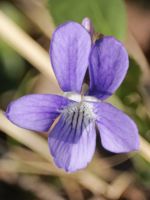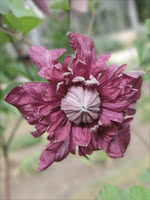Mon-Fri 9am - 5pm Mountain time
Purpurea Plena Elegans Clematis vs Early Blue Violet
Viola adunca
Clematis Purpurea Plena Elegans
NOT AVAILABLE THIS SEASON - MIGHT RETURN
NOT AVAILABLE THIS SEASON - MIGHT RETURN
Early Blue Violet is a low-growing native perennial wildflower valued for its striking early-spring blooms. The flowers range in color from vibrant blue to deep violet, often marked with pale highlights and fine white hairs. They provide an important early nectar source for pollinators and serve as a host plant for several fritillary butterfly species.
It spreads by both seed and rhizomes, gradually forming small colonies. Its dark green, heart-shaped leaves add ornamental appeal, and the plant shows some resistance to deer browsing. Early Blue Violet is well-suited to naturalization projects and pollinator-friendly gardens, and has also been used in coastal butterfly habitat restoration in the Pacific Northwest.
Purpurea Plena Elegans Clematis (P.P.E) is a stunning climbing vine. The flowers are double flowers, meaning they have an inner pompom surrounded by outer petals. They are distinct dusty rose colour with a long bloom time from mid-summer to early fall. They can remain on the vine for up to three weeks. It is durable and easy to maintain and train.
One of the oldest clematis cultivars, Purpurea Plena Elegans Clematis (P.P.E) is a winner of the Royal Horticultural Society's Award of Garden Merit.
The Purpurea Plena Elegans Clematis will attract pollinators to your yard or garden attracting butterflies and hummingbirds. Because it is a climbing species, support from a trellis or fence is recommended. New vines emerge from the ground, so pruning should be done in early spring.
Early Blue Violet Quick Facts
Purpurea Plena Elegans Clematis Quick Facts
Toxicity: rhizomes, fruit, seed poisonous to humans

